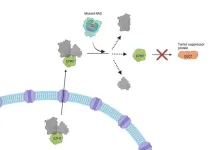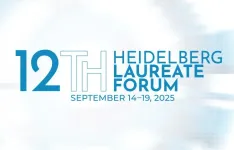(Press-News.org) Research Highlights:
A study of nearly 2,400 cardiac arrest cases in North Carolina found that when emergency dispatchers (telecommunicators) provided cardiopulmonary resuscitation (CPR) instructions to 911 callers, people were more likely to provide aid for both men and women.
The study’s findings indicate that when a telecommunicator provided assistance to callers, bystander CPR was performed 44% of the time on women and 40% on men, compared to 9% on women and 11% on men when telecommunicator assistance was not provided.
Researchers found the telecommunicator role critical in instructing bystanders to act quickly, possibly instrumental in reducing sex disparities in bystander CPR and deserving of further investigation.
Note: The study featured in this news release is a research abstract. Abstracts presented at American Heart Association’s scientific meetings are not peer-reviewed, and the findings are considered preliminary until published as full manuscripts in a peer-reviewed scientific journal.
Embargoed until 4 a.m. CT/5 a.m. ET, Monday, Nov. 11, 2024
DALLAS, Nov. 11, 2024 — Women were less likely than men to receive cardiopulmonary resuscitation (CPR) in public, however, this disparity improved when 911 telecommunicators provided lifesaving instructions to callers seeking help for someone having a cardiac arrest, according to preliminary research to be presented at the American Heart Association’s Resuscitation Science Symposium 2024. The meeting will be held Nov. 16-17, 2024, at the Hilton Chicago Hotel in Chicago and will feature the most recent advances related to treating cardiopulmonary arrest and life-threatening traumatic injury.
Cardiac arrest, which occurs when the heart malfunctions and abruptly stops beating, is often fatal without quick medical attention such as CPR to increase blood flow to the heart and brain. More than 357,000 out-of-hospital cardiac arrests happen each year in the U.S. with a 9.3% survival rate.[1]
In this study, researchers identified nearly 2,400 out-of-hospital cardiac arrest cases from the Cardiac Arrest Registry to Enhance Survival (CARES) from 2022 to 2023. They examined differences between women and men receiving bystander CPR and time measures, including time to recognize the need for CPR and time to first compression.
The study found:
When a telecommunicator provided assistance to a caller by instructing them on how to perform CPR, bystander CPR was given to women 44% of the time and 40% of the time to men, compared to 9% for women and 11% for men when there was no telecommunicator assistance.
These differences by sex in receiving bystander CPR were not statistically significant, indicating there was no substantial difference between men and women. However, they do showcase the crucial role of the support given by a telecommunicator on the phone during a cardiac emergency.
“CPR can double an individual’s chance of survival,” said Audrey Blewer, Ph.D., M.P.H., the study’s lead author and an assistant professor in the departments of family medicine and community health and population health sciences in the Schools of Medicine and the School of Nursing at Duke University in Durham, North Carolina. “The findings from our research are consistent with similar results from a study conducted in Korea. Previous research has shown that hesitance may be a reason women are less likely than men to receive CPR in public. Some of the concerns identified were concerns about touching a woman’s chest during the lifesaving technique or fear the action could be perceived as assault.”
Blewer noted their most recent findings help support the idea that there is a need for more advocacy to support community emergency response, and the role of the telecommunicator is critical and could be instrumental in reducing known sex disparities. This study highlights the importance of the first link in the out-of-hospital cardiac arrest chain of survival — activation of the emergency response system.
The analysis also found:
Bystander CPR was administered in 52% of cardiac arrests occurring outside of a hospital. Of these cases, 81% were performed with telecommunicator assistance compared to 19% were provided without assistance.
The median time from call received to the telecommunicator recognizing the need for CPR was 87 seconds (one minute and 27 seconds) for both women and men.
The median time to first compression from the time the telecommunicator received the call was 204 seconds (three minutes and 24 seconds) for women, compared to 207 seconds (three minutes and 27 seconds) for men.
“Everyone who experiences a cardiac arrest should have an equal opportunity to receive CPR,” Blewer said. “We are doing everything we can to research ways to address this known inequity affecting women. We hope that our research will help close this gap in the future. Most importantly, our findings prove if anyone encounters a person in cardiac arrest, it is important that they call 911 immediately and push hard and fast on the center of the person’s chest.”
“Taking action will help raise awareness, increase bystander CPR and improve survival from cardiac arrest,” she said.
A limitation of the study is that it is a secondary analysis of a larger, ongoing clinical trial, which minimized its sample size. There is a limit in generalizability because the data is from North Carolina, findings may be different for people living in other states.
Study details and background:
Among people whose cardiac arrest cases were examined, the average age was 63 years old, 67% were white and 37% were women.
The study used data from the Randomized Cluster Evaluation of Cardiac Arrest Systems, a seven-year trial led by the Duke Clinical Research Institute focused on improving outcomes for out-of-hospital cardiac arrest victims.
The trial collected information for 8,839 out-of-hospital cardiac arrest cases from July 2022 through December 2023 covering 52 North Carolina counties, about half of the state.
Researchers identified 2,398 of the cases of out-of-hospital cardiac arrests for their analysis, after excluding pediatric, traumatic and health care facility cardiac arrests and those witnessed by emergency medical services.
Co-authors, disclosures and funding sources are listed in the manuscript.
Statements and conclusions of studies that are presented at the American Heart Association’s scientific meetings are solely those of the study authors and do not necessarily reflect the Association’s policy or position. The Association makes no representation or guarantee as to their accuracy or reliability. Abstracts presented at the Association’s scientific meetings are not peer-reviewed, rather, they are curated by independent review panels and are considered based on the potential to add to the diversity of scientific issues and views discussed at the meeting. The findings are considered preliminary until published as a full manuscript in a peer-reviewed scientific journal.
The Association receives funding primarily from individuals; foundations and corporations (including pharmaceutical, device manufacturers and other companies) also make donations and fund specific Association programs and events. The Association has strict policies to prevent these relationships from influencing the science content. Revenues from pharmaceutical and biotech companies, device manufacturers and health insurance providers and the Association’s overall financial information are available here.
Additional Resources:
Multimedia is available on the right column of the release link https://newsroom.heart.org/news/911-dispatcher-assistance-improved-chances-of-receiving-bystander-cpr?preview=1b931c386375a7b153ce6e7b99ce7077
Link to abstract; and AHA Resuscitation Science Symposium 2024 Online Program Planner
AHA news release: Impact Update: CPR willingness grows in the U.S., need to act remains (June 2024)
AHA health information: Cardiac arrest chain of survival
AHA health initiative: Join the Nation of Lifesavers
AHA resources: Find a CPR course
For more news at AHA Resuscitation Science Symposium 2024, follow us on X @HeartNews, #ReSS24
###
About the American Heart Association
The American Heart Association is a relentless force for a world of longer, healthier lives. We are dedicated to ensuring equitable health in all communities. Through collaboration with numerous organizations, and powered by millions of volunteers, we fund innovative research, advocate for the public’s health and share lifesaving resources. The Dallas-based organization has been a leading source of health information for a century. During 2024 - our Centennial year - we celebrate our rich 100-year history and accomplishments. As we forge ahead into our second century of bold discovery and impact, our vision is to advance health and hope for everyone, everywhere. Connect with us on heart.org, Facebook, X or by calling 1-800-AHA-USA1.
[1] 2024 Heart Disease and Stroke Statistics: A Report of US and Global Data From the American Heart Association | Circulation (ahajournals.org)
END
911 dispatcher assistance improved chances of receiving bystander CPR
American Heart Association Resuscitation Science Symposium 2024, Abstract Sa701
2024-11-11
ELSE PRESS RELEASES FROM THIS DATE:
GLP-1, SGLT2 medications may lower stroke survivor’s risk of future heart attack, stroke
2024-11-11
Research Highlights:
In an analysis of more than 7,000 stroke survivors, those who were taking either a GLP1-receptor agonist or an SGLT2 inhibitor medication had a lower risk of a subsequent stroke, heart attack or death compared to peers who were not prescribed the medications during a three-year follow up period.
The analysis used health data from the Rochester Epidemiology Project collected from 2000 to 2022. The first GLP-1 medication was prescribed beginning in 2006, and the authors included cases beginning in 2000 to increase the power of the study, they noted.
Note: The study featured in this news release ...
TYK2 transforms tau from ‘good guy’ to a ‘bad guy’ that contributes to Alzheimer’s disease
2024-11-11
Researchers at Baylor College of Medicine, the Jan and Dan Duncan Neurological Research Institute (Duncan NRI) at Texas Children’s Hospital and collaborating institutions discovered that the enzyme TYK2 transforms the normal protein tau into one that accumulates in the brain and contributes to the development of Alzheimer’s disease in animal models. Published in Nature Neuroscience, the study suggests that partially restraining TYK2 could be a strategy to reduce tau levels and toxicity.
“Many studies have shown that the accumulation ...
Elephant seal colony declines one year after avian flu outbreak
2024-11-11
The sounds of barking elephant seals are again in the air along the breeding grounds of Península Valdés, Argentina—but it’s quieter. Almost exactly a year after a massive outbreak of H5N1 highly pathogenic avian influenza killed more than 17,000 elephant seals, including about 97% of their pups, scientists estimate that only about a third of the elephant seals normally expected here returned.
“It’s beautiful to walk the beaches now and hear elephant seals again,” said Marcela Uhart, director of the Latin America Program at the UC Davis Karen C. Drayer Wildlife Health Center within ...
While more is better, even moderate amounts of exercise may reduce risk for common heart condition
2024-11-11
Adding an extra hour every week of physical activity may lower the chance of developing the most common type of irregular heartbeat (arrythmia) by 11%, a new study shows.
Led by researchers at NYU Langone Health, the investigation focused on atrial fibrillation, a condition in which the heart’s upper two chambers beat rapidly and irregularly instead of at a consistent pace. If left untreated, this can lead to stroke, heart failure, and other issues. While past studies have linked exercise to reduced risk of this type of arrhythmia, nearly all of these analyses have relied on the participants’ ...
Researchers uncover new role of mutant proteins in some of the deadliest cancers
2024-11-11
Researchers at the National Institutes of Health (NIH) and their collaborators have discovered a new way in which RAS genes, which are commonly mutated in cancer, may drive tumor growth beyond their well-known role in signaling at the cell surface. Mutant RAS, they found, helps to kick off a series of events involving the transport of specific nuclear proteins that lead to uncontrolled tumor growth, according to a study published November 11, 2024, in Nature Cancer.
RAS genes are the second most frequently mutated genes in cancer, and mutant RAS proteins are key drivers of some of the deadliest cancers, ...
Patients may become unnecessarily depressed by common heart medicine
2024-11-11
All patients who have had a heart attack are typically treated using beta blockers. According to a Swedish study conducted earlier this year, this drug is unlikely to be needed for those heart patients who have a normal pumping ability. Now a sub-study at Uppsala University shows that there is also a risk that these patients will become depressed by the treatment.
“We found that beta blockers led to slightly higher levels of depression symptoms in patients who had had a heart attack but were not suffering from heart failure. At the same time, beta blockers have no life-sustaining function for this group of patients,” says Philip Leissner, a doctoral student in cardiac ...
Largest T cell clinical trial in solid tumors heralds new era in precision immunotherapy
2024-11-11
The largest ever clinical trial of T cell therapy (a type of cell-based immunotherapy) for solid tumours has been completed.
Led by a Singapore clinician-investigator, the global, international, multisite trial recruited 330 advanced nasopharyngeal (NPC) cancer patients in 23 sites across Singapore, Malaysia, Thailand, Taiwan and the United States.
The trial did not show an overall survival benefit for the entire patient cohort but a subset analysis combining outcomes of US, Singapore and Taiwanese sites, showed better progression free survival ...
Call for applications: Participation in the 12th Heidelberg Laureate Forum for Outstanding Young Researchers in Mathematics and Computer Science
2024-11-11
The application process for the 12th Heidelberg Laureate Forum has begun!
Young researchers in mathematics and computer science from all over the world can apply for one of the 200 exclusive spots to participate in the Heidelberg Laureate Forum (HLF), an annual networking conference. The HLF offers all accepted young researchers the unique opportunity to interact with the laureates of the most prestigious prizes in the fields of mathematics and computer science. Traditionally, the recipients of the Abel Prize, the ACM A.M. Turing Award, the ACM Prize in Computing, ...
A milestone for reproductive medicine: Producing viable eggs from undeveloped oocytes through In vitro technology
2024-11-11
Mature egg cells, or oocytes, are essential for fertilization in assisted reproductive technologies. However, some ‘denuded’ oocytes, or those lacking the protective granulosa cell layer, fail to mature. Now, in a new study by researchers at Shinshu University, the team has developed a method to culture mature oocytes from these denuded oocytes in the lab. This innovative approach holds promise for overcoming significant challenges in reproductive science, marking a major advancement in fertility research.
Assisted ...
Vast majority of Trump voters believe American values and prosperity are ‘under threat’
2024-11-11
Almost nine out of ten voters who supported Donald Trump for US President believe that America’s values, traditions and future economic prosperity are under threat – double the number of Kamala Harris supporters.
This is according to new data from Cambridge University’s Political Psychology lab, who worked with YouGov to conduct an opinion poll of US voters shortly before the election.*
Some 89% of Trump voters agree that “American values and beliefs are being undermined and cherished traditions are under threat” compared ...
LAST 30 PRESS RELEASES:
There are new antivirals being tested for herpesviruses. Scientists now know how they work
CDI scientist, colleagues author review of global burden of fungus Candida auris
How does stroke influence speech comprehension?
B cells transiently unlock their plasticity, risking lymphoma development
Advanced AI dodel predicts spoken language outcomes in deaf children after cochlear implants
Multimodal imaging-based cerebral blood flow prediction model development in simulated microgravity
Accelerated streaming subgraph matching framework is faster, more robust, and scalable
Gestational diabetes rose every year in the US since 2016
OHSU researchers find breast cancer drug boosts leukemia treatment
Fear and medical misinformation regarding risk of progression or recurrence among patients with breast cancer
Glucagonlike peptide-1 receptor agonists and asthma risk in adolescents with obesity
Reviving dormant immunity: Millimeter waves reprogram the immunosuppressive microenvironment to potentiate immunotherapy without obvious side effects
Safety decision-making for autonomous vehicles integrating passenger physiological states by fNIRS
Fires could emit more air pollution than previously estimated
A new way to map how cells choose their fate
Numbers in our sights affect how we perceive space
SIMJ announces global collaborative book project in commemoration of its 75th anniversary
Air pollution exposure and birth weight
Obstructive sleep apnea risk and mental health conditions among older adults
How talking slows eye movements behind the wheel
The Ceramic Society of Japan’s Oxoate Ceramics Research Association launches new international book project
Heart-brain connection: international study reveals the role of the vagus nerve in keeping the heart young
Researchers identify Rb1 as a predictive biomarker for a new therapeutic strategy in some breast cancers
Survey reveals ethical gaps slowing AI adoption in pediatric surgery
Stimulant ADHD medications work differently than thought
AI overestimates how smart people are, according to HSE economists
HSE researchers create genome-wide map of quadruplexes
Scientists boost cell "powerhouses" to burn more calories
Automatic label checking: The missing step in making reliable medical AI
Low daily alcohol intake linked to 50% heightened mouth cancer risk in India
[Press-News.org] 911 dispatcher assistance improved chances of receiving bystander CPRAmerican Heart Association Resuscitation Science Symposium 2024, Abstract Sa701




